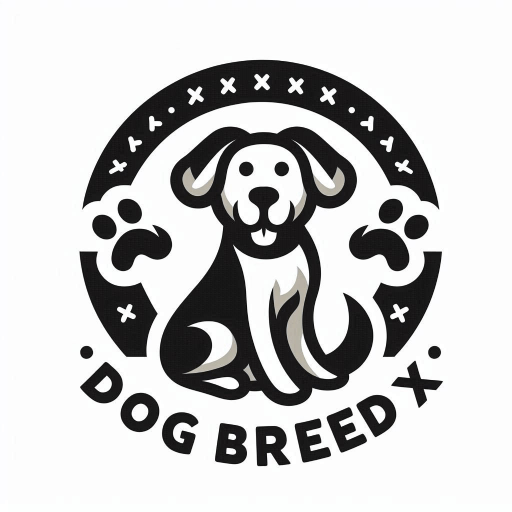Table of Contents
German Shepherd Dog Breed
The German Shepherd is one of the most popular and recognizable dog breeds worldwide, known for its intelligence, versatility, and unwavering loyalty. Originally bred for herding sheep, the German Shepherd has since proven itself in a variety of roles, from working dog to family companion. With their strong work ethic, protective instincts, and keen intelligence, German Shepherds are often chosen for roles in law enforcement, search and rescue, and military service. Their striking appearance, combined with their devoted nature, makes them a favorite among dog owners who seek a loyal and capable companion.
German Shepherd Dog History and Origin
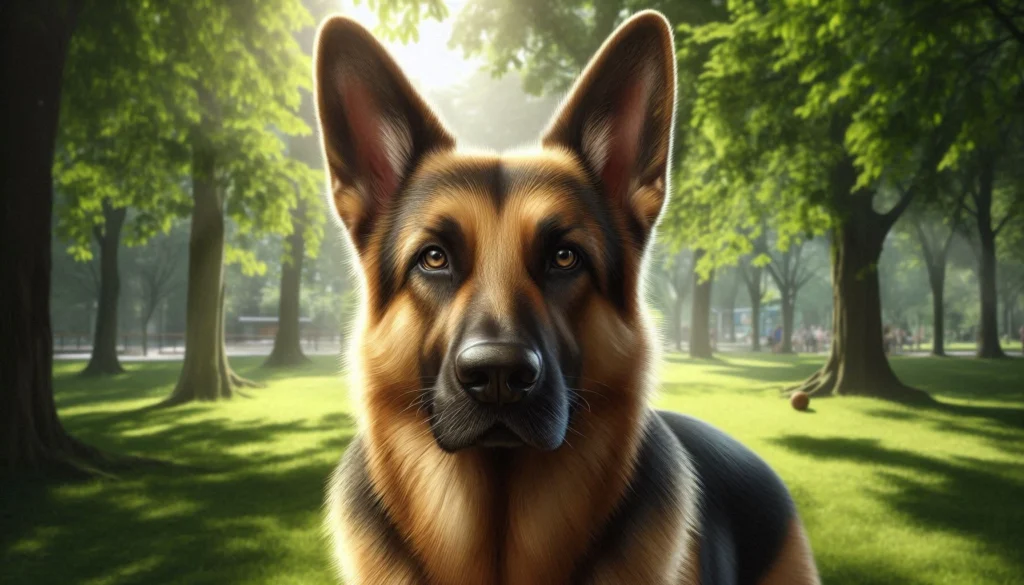
The German Shepherd breed originated in Germany in the late 19th century, thanks to the efforts of a man named Captain Max von Stephanitz, who is often credited as the father of the breed. Von Stephanitz was a former cavalry officer and a dog enthusiast who wanted to create a superior herding dog that could also serve as a versatile working dog.
Development of the Breed
Von Stephanitz began his quest by selecting dogs with strong working abilities, particularly those used by German shepherds to herd and protect their flocks. He was particularly impressed by a dog named Hektor Linksrhein, who had the qualities he was looking for intelligence, strength, loyalty, and an impressive work ethic. Von Stephanitz purchased Hektor, renamed him Horand von Grafrath, and founded the Verein für Deutsche Schäferhunde (Society for the German Shepherd Dog) in 1899. Horand became the first registered German Shepherd and the foundation of the breed.
Role in World Wars
The German Shepherd’s versatility and intelligence quickly made it a popular choice for roles beyond herding. During World War I and World War II, German Shepherds were used extensively by the military for tasks such as delivering messages, detecting mines, and serving as guard dogs. Their bravery and reliability in these roles further cemented their reputation as one of the world’s premier working breeds.
After the wars, returning soldiers brought German Shepherds back to their home countries, contributing to the breed’s popularity in the United States, the United Kingdom, and beyond. The breed’s association with bravery and service continues to this day, with German Shepherds often serving in police and military units worldwide.
German Shepherd Dog Physical Characteristics
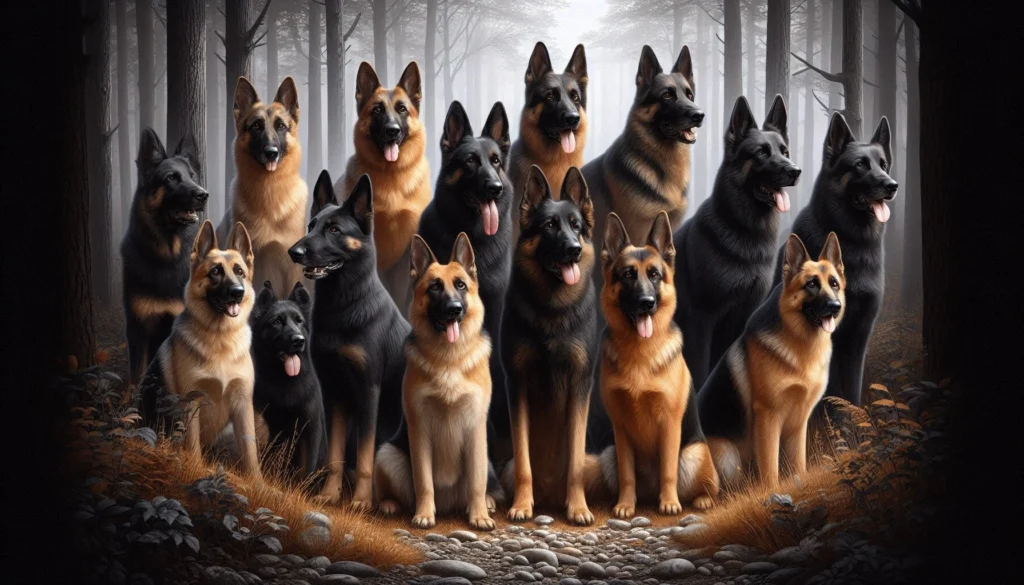
The German Shepherd is a large, powerful, and agile dog with a well balanced and muscular build. Their appearance is both striking and functional, with every aspect of their physique contributing to their role as a working dog.
Size
German Shepherds are a large breed, with males typically standing 24 to 26 inches tall at the shoulder and weighing between 65 to 90 pounds. Females are slightly smaller, standing 22 to 24 inches tall and weighing between 50 to 70 pounds. Despite their size, they are known for their grace and agility.
Coat Type and Colors
The German Shepherd has a double coat that provides protection against various weather conditions. The outer coat is dense, straight, and coarse, while the undercoat is soft and insulating. There are two main coat types: short-haired and long-haired. The short-haired variety is more common and better suited for working roles.
German Shepherds come in a variety of colors, including:
- Black and Tan: The most common color pattern, featuring a black saddle over the back and tan or gold markings on the legs, face, and underside.
- Black and Red: Similar to black and tan but with a deeper, richer red hue instead of tan.
- Solid Black: All black coat without any markings.
- Sable: A mix of black-tipped hairs over a background color, giving a shaded or “sable” appearance.
Distinctive Features
German Shepherds are known for their noble and confident expression, which is enhanced by their erect ears and dark, almond-shaped eyes. Their bodies are well-muscled and slightly longer than tall, giving them a powerful yet agile appearance. The breed’s bushy tail is usually carried low and can indicate their mood or alertness.
Temperament and Personality
German Shepherds are renowned for their intelligence, loyalty, and versatility. They are often described as confident, courageous, and eager to please, making them highly trainable and adaptable to a wide range of roles and environments.
Interaction with People
German Shepherds form strong bonds with their owners and are known for their loyalty and protective instincts. They are naturally wary of strangers, which makes them excellent guard dogs, but with proper socialization, they can be friendly and approachable. This breed thrives on companionship and tends to form close attachments to their family members.
Interaction with Children and Other Animals
German Shepherds can be great family dogs, especially when raised with children. They are generally gentle and protective, making them good playmates and guardians for kids. However, due to their size and strength, interactions with very young children should be supervised to prevent accidental knocks or rough play.
When it comes to other animals, German Shepherds can get along well with other dogs, especially if they are socialized from a young age. They may have a strong prey drive, so care should be taken when introducing them to smaller pets like cats or rabbits. Proper training and socialization can help them coexist peacefully with other animals.
Energy Levels and Activity
German Shepherds are an active and energetic breed that requires regular exercise to stay healthy and happy. They enjoy a variety of activities, including long walks, running, hiking, and playing fetch. Due to their intelligence, they also benefit from mental stimulation, such as puzzle toys, obedience training, and interactive games. Without sufficient physical and mental exercise, they may become bored, leading to behavioral issues.
Health and Lifespan
German Shepherds are generally a healthy breed, but like all dogs, they are prone to certain health issues. Being aware of these potential problems can help you take proactive steps to keep your German Shepherd healthy throughout their life.
Common Health Issues
- Hip Dysplasia: A common condition in large breeds where the hip joint does not fit properly into the hip socket, leading to pain and arthritis.
- Elbow Dysplasia: Similar to hip dysplasia, this condition affects the elbow joint and can lead to lameness and arthritis.
- Degenerative Myelopathy: A progressive neurological disease that affects the spinal cord, leading to weakness and eventual paralysis of the hind legs.
- Gastric Dilatation-Volvulus (Bloat): A life threatening condition where the stomach fills with gas and twists, cutting off blood flow. This requires immediate veterinary attention.
- Panosteitis: Often referred to as “growing pains,” this is an inflammation of the long bones in the legs, which can cause lameness.
Lifespan
The average lifespan of a German Shepherd is between 9 to 13 years. With proper care, regular veterinary check ups, and a healthy lifestyle, many German Shepherds can live a full and active life well into their senior years.
Tips for Keeping Your German Shepherd Healthy
- Regular Exercise: Ensure your German Shepherd gets plenty of physical activity to maintain a healthy weight and prevent boredom-related behaviors.
- Balanced Diet: Feed your dog a high-quality diet appropriate for their age, size, and activity level. Avoid overfeeding, as obesity can exacerbate joint problems.
- Veterinary Care: Schedule regular vet visits for check-ups, vaccinations, and early detection of potential health issues.
- Dental Care: Brush your dog’s teeth regularly to prevent dental diseases, which are common in all breeds.
Care and Grooming
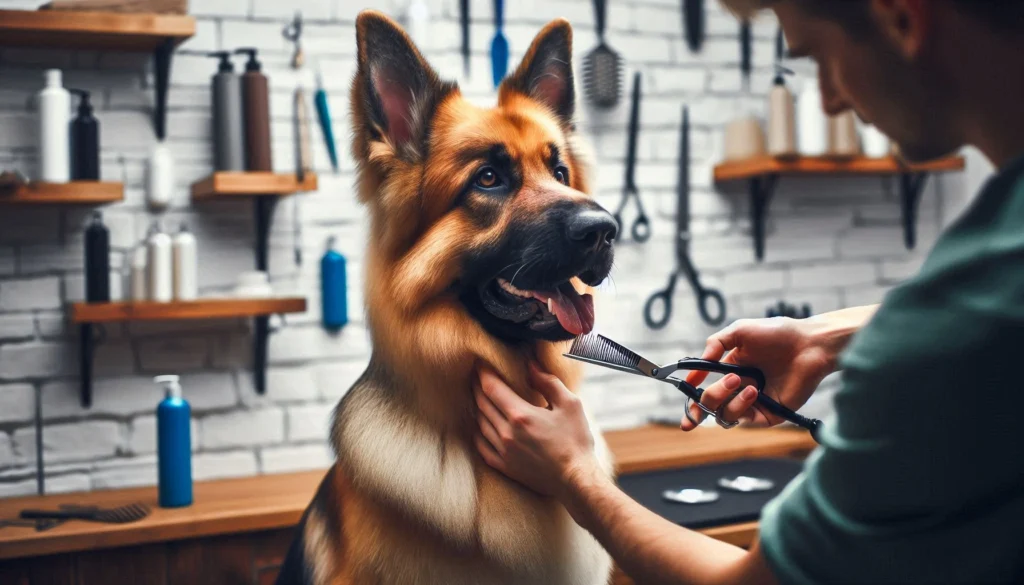
German Shepherds require regular care and grooming to keep them looking their best and feeling healthy. While they are relatively low maintenance compared to some breeds, their double coat does require attention, particularly during shedding seasons.
Grooming Needs
- Brushing: German Shepherds shed year round, with heavier shedding occurring twice a year during spring and fall. Regular brushing, at least a few times a week, will help remove loose hair and reduce shedding around the house. A de-shedding tool or undercoat rake can be particularly helpful during shedding season.
- Bathing: Bathe your German Shepherd as needed, typically every few months or when they get particularly dirty. Use a gentle, dog-specific shampoo to avoid irritating their skin.
- Nail Trimming: Regularly trim your dog’s nails to prevent overgrowth, which can cause discomfort or lead to injury.
- Ear Cleaning: Check and clean your dog’s ears weekly to prevent ear infections, especially if they have floppy ears that can trap moisture and debris.
- Dental Care: Brush your dog’s teeth regularly to prevent dental diseases, and provide dental chews or toys to help maintain oral health.
Exercise Requirements
German Shepherds are an active breed that needs plenty of exercise to stay healthy and happy. A daily routine that includes at least an hour of physical activity, such as walks, runs, or playtime, is essential. They also benefit from activities that challenge their intelligence, such as obedience training, agility courses, and scent work. Without adequate exercise, German Shepherds can become bored and develop destructive behaviors.
Dietary Recommendations
Feed your German Shepherd a balanced diet that is appropriate for their age, size, and activity level. High-quality commercial dog food or a well planned homemade diet can work well. Be sure to monitor their weight and adjust their food intake as needed to prevent obesity, which can lead to joint problems and other health issues. Always provide fresh water and consider using puzzle feeders or slow feeders to engage their minds during mealtime.
Training and Socialization

Training and socialization are crucial for raising a well behaved and well adjusted German Shepherd. Their intelligence and eagerness to please make them highly trainable, but they can also be strong willed, so consistent and positive training methods are essential.
Training Tips
- Start Early: Begin training your German Shepherd as a puppy to establish good habits early on. Basic commands such as “sit,” “stay,” and “come” are essential.
- Positive Reinforcement: Use treats, praise, and play to reward good behavior. Positive reinforcement is the most effective method for this breed.
- Consistency: Be consistent in your training approach. Setting clear rules and sticking to them helps avoid confusion and reinforces good behavior.
- Mental Stimulation: German Shepherds are highly intelligent and thrive on mental challenges. Incorporate puzzle toys, obedience training, and interactive games into their routine to keep their minds sharp.
Socialization
Early socialization is vital for German Shepherds to ensure they grow up to be well-rounded dogs. Expose them to a variety of people, animals, and environments from a young age to help them develop confidence and good manners. Regular interactions with other dogs and people will help prevent any potential aggression or fear-based behaviors.
Suitability as a Family Pet
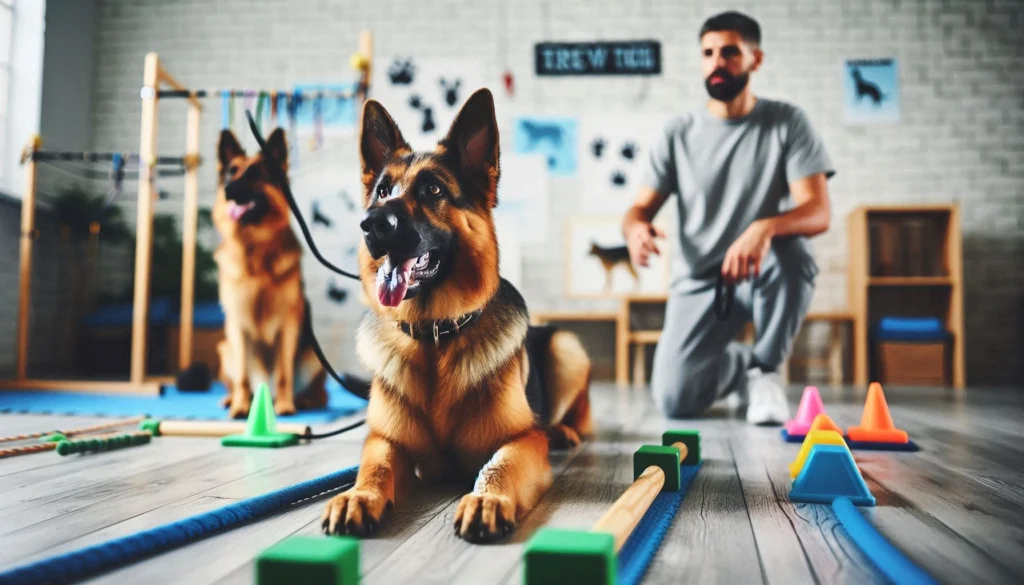
German Shepherds can make excellent family pets, but they are not the perfect fit for every household. Here are some considerations to keep in mind:
Living Environment
- Homes with Yards: German Shepherds thrive in homes with yards where they can run and play freely. However, they can adapt to apartment living if they receive sufficient exercise and mental stimulation.
- Active Families: This breed is best suited for active families or individuals who can provide ample exercise and mental engagement. They enjoy being involved in family activities and are happiest when they have a job to do.
Compatibility with Children and Pets
German Shepherds are known for their affection towards children and can be great family dogs. They are gentle and protective, often forming strong bonds with young family members. However, their size and strength mean that supervision is necessary during playtime with small children to prevent accidental injuries.
With other pets, especially dogs, German Shepherds can get along well, particularly if they are socialized from a young age. However, their strong prey drive may require careful introductions and monitoring when meeting new animals.
Fun Facts and Trivia
- Police and Military Dogs: German Shepherds are one of the most common breeds used in police and military work, thanks to their intelligence, strength, and trainability.
- Movie Stars: The famous German Shepherd, Rin Tin Tin, was a Hollywood star in the 1920s and helped popularize the breed in the United States.
- World War I Hero: A German Shepherd named Stubby became a decorated war hero during World War I, serving alongside American troops.
Similar Dog Breeds to the German Shepherd



If you’re interested in the German Shepherd, you might also consider these similar dog breeds:
1. Belgian Malinois
The Belgian Malinois is often compared to the German Shepherd due to its similar appearance and working abilities. They are highly intelligent, energetic, and frequently used in police and military work.
2. Dutch Shepherd
Dutch Shepherds are another herding breed that shares many characteristics with the German Shepherd. They are known for their loyalty, intelligence, and versatility in various working roles.
3. Australian Shepherd
The Australian Shepherd is a highly intelligent and energetic breed that excels in herding and agility. While they are smaller and have a different appearance, they share the German Shepherd’s work ethic and loyalty.
Conclusion
The German Shepherd is a remarkable breed known for its intelligence, loyalty, and versatility. Whether serving as a working dog or a beloved family companion, the German Shepherd excels in almost any role it is given. However, they require a dedicated owner who can meet their exercise, training, and socialization needs. If you’re looking for a loyal, protective, and capable dog, the German Shepherd might be the perfect fit for you.
FAQs
Is the German Shepherd a dangerous dog?
No, the German Shepherd is not inherently dangerous. While they are protective and may be wary of strangers, their behavior depends largely on their upbringing, training, and socialization. With proper training and socialization, German Shepherds can be gentle and friendly companions.
Is the German Shepherd the best guard dog to protect you or your family?
German Shepherds are excellent guard dogs due to their loyalty, intelligence, and protective instincts. They are naturally wary of strangers and will alert their owners to any potential threats. However, their effectiveness as guard dogs depends on proper training and socialization.
